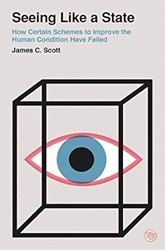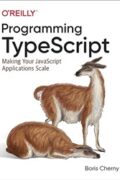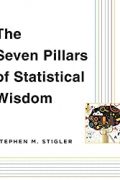
Rating: 7.8/10.
Book covering multiple topics in politics, ecology, and sociology — the main argument of the book is a case against “Authoritarian High Modernism,” which essentially refers to the idea of imposing top-down control over society and using scientific and mathematical principles to enhance efficiency. This concept is most notably exemplified in the authoritarian and communist states of the 20th century, which caused significant human suffering. The book argues that these schemes almost always fail because they overlook local variations and details, by oversimplifying everything to a common denominator, the result becomes unworkable for everyone. The state attempts to enforce local simplification and uniform conditions on inherently diverse localities. This is necessary because the complexities of local conditions are too intricate for a centralized state to model completely. When an authoritarian regime enforces central decisions while disregarding local conditions, it often leads to disaster.
Before the advent of modern, centralized standards, each region had its own local values for measurement systems, and unique methods for redistributing land among families in cases of poor harvests or deaths. Although these systems might be difficult for outsiders to understand, everyone in the village knows how they work. When the state intervenes, it imposes simplifications and enforces a uniform set of rules across all regions. While this approach makes the regions appear more legible, it sacrifices local conditions and flexibility in the name of uniformity. For example, in forestry, the state often considers only a few primary factors, ignoring numerous secondary ones, which can lead to a divergence from reality over time.
The state also tries to impose a regular order on the layout of cities, which has advantages for government and military purposes. Additionally, it enforces the use of a constant surname throughout an individual’s lifetime and across generations, making it easier to track and tax citizens. Language is also standardized, replacing local dialects with a uniform language. Together, these measures enable visibility into local situations from afar, without personally knowing the inhabitants, and facilitate the aggregation of statistics over regions.
The author uses the term “authoritarian high modernism” when several conditions apply: a society decides to use scientific and mathematical methods to shape and design its entirety; this vision is driven top-down with a focus on simplicity, straight lines, uniformity, etc., without considering local factors; it is declared that short-term sacrifice is worthwhile for a better future; and the government is able to continue driving this plan despite popular dissent.
In high modernist city planning, an example is Le Corbusier. His plans for cities, which looked nice from a top-down perspective with a lot of formal structure, were supposed to maximize efficiency but completely ignored local landscapes and conditions. A similar model was actually implemented in Brasília, which was not a complete failure only because the vision was partially implemented. Generally, people prefer mixed-use zoning, where a space or a trip often fulfills multiple purposes simultaneously; in contrast, high modernist planning designates one purpose to each zone, making things very barren.
The Russian Revolution — Lenin wrote a book in which he envisioned the revolution as being top-down and high modernist, where a vanguard of elites directs the masses. However, in reality, this is not quite what happened; the Bolsheviks were quite an obscure group until the revolution had already occurred and created a power vacuum, which they then stepped in to fill. In contrast to Lenin’s philosophy, Rosa Luxemburg countered that a revolution is mostly organic and not a top-down process, with the role of the elites being at most that of gentle guides to the already existing organic process.
The next part of the book deals with various attempts to modernize rural life. For example in Southeast Asia, like Indonesia, various mobile populations were forced into planned settlements so that their activities were more legible to the state, as visibility is a prerequisite for the state to exert any influence.
Perhaps the most significant and almost obvious example of authoritarianism applied to rural people is Soviet collectivization. This policy was driven by the view of improving agricultural efficiency, but it lacked local knowledge about the land’s structure and its production capacity, yet it proceeded anyway. The result was an inefficient mess; arbitrary quotas led to poor control and enforcement, and ultimately, mass starvation. The peasants essentially became forced laborers. Unlike previous generations of forced laborers who at least had food, these were falsely labeled yet still starved. The state was somewhat capable of producing grain, but it was especially poor at producing a good meal with vegetables and eggs, etc., because these items required more attention and were best produced on a smaller scale.
The next example is villagerization in Tanzania, which, contrary to Soviet collectivization, was not intended as a full-on effort but still involved some coercion. Central authorities moved farmers into planned villages with neatly rectangular plots, but this proved much less efficient. They promoted a scheme of regular farming, which was less efficient than the farmers’ existing system of planting multiple crops together, a practice that heavily relied on local knowledge and was refined over centuries of trial and error.
Many farmers in different localities have successfully practiced polycropping, or planting different crops together on the same land. This increases diversity and prevents epidemics from spreading quickly. Even though it might not be optimal in the short term, in the long term, it results in a much more stable outcome than monocropping. The scientific method, however, does not work very well with so many variables. It performs better when conditions are fixed, aiming to simplify conditions, like averaging the soil conditions over a plot of land. This fails to capture all the nuances of reality.
The author defines metis as practical knowledge and localized skills learned through years of trial and error. It is often intuitive and cannot be formally codified into rules. In many situations, this type of knowledge performs better than formal knowledge. In many cases, formal institutions require a sort of hidden underclass of metis workers to make the system function effectively.
Overall, the main argument of the book is quite interesting and convincing. It explains why so many attempts to improve rural societies have failed. However, the author does not offer a solution on how to make things better and implies that the best outcome is for the state to leave people alone, allowing them to continue practicing subsistence farming or their traditional practices as they have for generations. The book does not explain the successful cases, which is the entirety of the developed world, after all, most agriculture nowadays is not practiced by individual farmers polycropping on small plots of land, but is highly industrialized and mechanized, with central planning of crops, software, and machinery operating on very large and regular plots of land – exactly what the book claims to be ineffective. Therefore, the book fails to address why these modern schemes work and does not explain any aspects of modern development.



